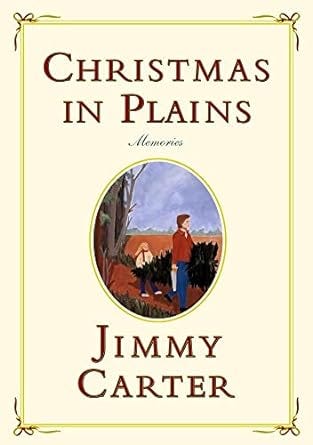Is there anything better on a languid weekend morning than a mug of fresh, hot coffee, and the Sunday newspaper, with its myriad of articles to discover? These Sunday Morning Coffee posts are my occasional accompaniment to the Sunday paper, just a few varied links to things I’ve been reading, listening to, or pondering.
Merry Christmas!
This is a holiday edition of Sunday Morning Coffee. A collection of Christmas or end-of-the-year things to ponder. After this, I’m going to take the holidays off to spend time with family, read, and consider ways to improve The Riel World in the New Year. I’ll see you again in two weeks.
The origins of popular Christmas songs
All works of art have a backstory, though not always the one you expect. So it is even with popular Christmas songs.
The story of Rudolph the Red-Nosed Reindeer, for instance, was written in 1939 by a copywriter for the Montgomery Ward store. The writer, Robert May, was depressed because his wife was dying, he was in debt, and he was working as a copywriter instead of following his dream of being a novelist. His reindeer story was distributed for free by Montgomery Ward in 1939. Ten years later it became a popular song by Gene Autry, and in 1964 was turned into a Christmas television special. May did receive royalties on the song and other Rudolph-related products, so the story he initially wrote for work did eventually earn him a nice living. The full story behind the song is in Time magazine.
The song White Christmas was written by Irving Berlin, also in the late 1930s, and became popular when Bing Crosby recorded it in 1942. Berlin was literally dreaming of a white Christmas when he wrote it because he felt displaced and out of sorts in Los Angeles and was missing the feel of the holiday that he remembered from his native New York. See this Los Angeles Times article for more.
And Jingle Bells, according to this piece in The Atlantic, was written in a tavern in Medford, Massachusetts in 1850 (though it was published and first performed in Savannah, Georgia). Some of the original lyrics were a bit spicy about a guy and a girl in a sleigh, and it was also seemingly a popular 19th century drinking song during which revelers would jingle ice cubes in their drinks.
The Winter Solstice
Yesterday was the winter solstice. If you’ve ever been curious about the solstice, whether the planetary science behind it or the ways in which the event is celebrated in cultures around the world, there is much more in this article in Wired magazine.
A winter solstice in the northern hemisphere happens when the north pole is tilted farthest away from the sun. The Arctic Circle is cloaked in darkness and experiences its longest night of the year. In the southern hemisphere, a summer solstice simultaneously happens with the south pole angled toward the sun and the Antarctic Circle experiencing midnight sun.
The Norwegian Secret to Enjoying a Long Winter
Speaking of winter, if you have the winter weather blues check out this piece in Fast Company on how Norwegians stay cheerful during the season’s cold, dark days:
As the days get darker and colder in much of the northern hemisphere, it’s easy to indulge in gloom … The gloom leads to a common question: What can I do to cope with the dark and cold? If you truly want to be happy during winter, though, this is the wrong approach to the season. Changing your mindset can do more than distracting yourself from the weather … It turns out that in northern Norway, “people view winter as something to be enjoyed, not something to be endured,” says Leibowitz, and that makes all the difference.
Dancing at 99-years-old
If you need a reason to smile, watch this video of Dick Van Dyke — who just celebrated his 99th birthday — dancing in Coldplay’s latest music video, All My Love. Van Dyke dances barefoot in his yard while Coldplay’s Chris Martin plays the piano. There is also a story about it in the New York Times.
Looking for some new books?
The end of the year means a lot of “best of” articles. Here are links to a few “best books of the year” pieces, in case you’re looking for some new books to read:
100 notable books of 2024 (NY Times)
100 must read books of 2024 (Time)
Award winning novels of 2024 (LitHub)
Readers’ favorite nonfiction 2024 (Goodreads)
Best book club books of 2024 (Book Riot)
Christmas in Plains with Jimmy Carter
Finally, Jimmy Carter celebrated his 100th birthday in October, the first U.S. president to reach that milestone. As a way to reflect both on Christmas and on Carter’s life, I pulled out some excerpts from his book, Christmas in Plains.
In the book, Carter recounts a lifetime of Christmas memories. Such as, in childhood, waking up cold and looking forward to sitting by the morning fire in the fireplace, or his family’s annual holiday party for friends at which the main attraction was his father’s homemade eggnog, meticulously prepared with dozens of eggs, quarts of cream, and spiked with bourbon for the adults.
The Carter farm was a few miles outside of Plains, and it's striking how much of the future president’s boyhood was spent among Black families. His closest neighbors were all Blacks “with whom I played, fought, fished, hunted, slept, ate, and worked in the cotton and peanut fields that were owned by my father.” Sometimes, when his parents were away, Carter stayed with the Clark family, sleeping on the floor of a small shack “on a pallet stuffed with corn shucks.” The Clarks, he said, “were surrogate parents for me.”
Despite this closeness, however, he was aware of the differences between his life and those of his friends.
Although I spent almost every free hour with my black friends, there was total racial segregation concerning both worship and education … Since school buses were only for white students and the black families had no automobiles, all their schooling and worship services had to be within walking distance … in smalls rooms in homes, or scattered about in the various corners of St. Mark AME Church.
And in terms of holiday gifts:
… sometimes it was embarrassing to compare mine with those of my black playmates. There was no doubt they also believed in Santa Claus, but their expectations were much lower … (For them) an outstanding Christmas morning would bring an orange or an apple and some raisins.
Eventually, Carter left for the Naval Academy. He always returned to Plains for the holidays, although with little money he often had to hitchhike home. On one of these trips, he met Rosalynn Smith and was instantly smitten. They married in 1946, when she was 19 and he was 22. They were married for 77 years before her death in 2023.
When he was president, the Carters returned home each year for the holidays, except for 1980 when American hostages were held in Iran. When he did return to Plains as president, Carter reveled in putting on his jeans and walking “in the familiar fields and woods,” or strolling Main Street so he could stop “at all the stores and shops to visit old friends … I was relieved that I was still just ‘Jimmy’ to all the citizens.”
After his presidency, he and Rosalynn went back to Plains and lived the rest of their lives in the same modest home they’d bought in 1961. Carter notes that one of his most memorable Christmases was a year he worked with Habitat for Humanity volunteers to build a new home for Curtis and Martha Jackson. The Jacksons were lifelong Plains residents, but lived in a ramshackle house with holes in the walls and no heat but for a woodstove. Curtis was disabled, having lost a leg in a logging accident.
Our children and grandchildren who came to Plains for Christmas joined us, and we labored until dark on Christmas Eve … Then, after dark, Curtis picked up Martha and brought her home to sleep in their new house. I think it’s true to say that most of us had forgotten all about Santa Claus. But Curtis and Martha hadn’t.
Anyway, a nice portrait of Christmases past in the Carter family.
I hope you all enjoy the holiday season!






Dick Van Dyke is bomb !! Thanks for this video